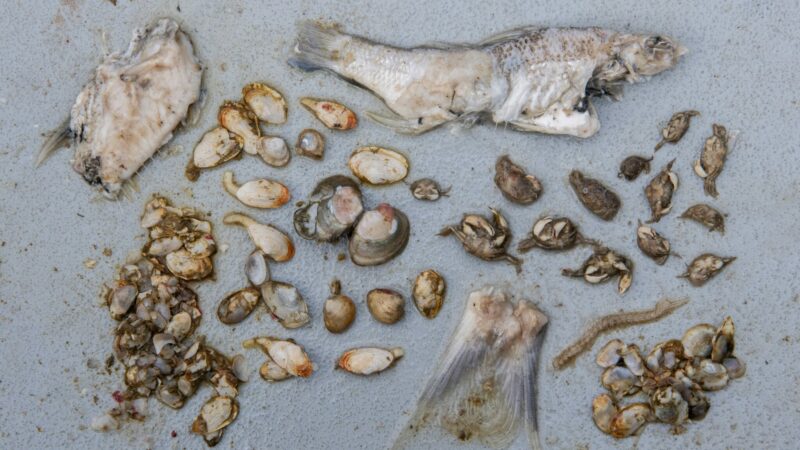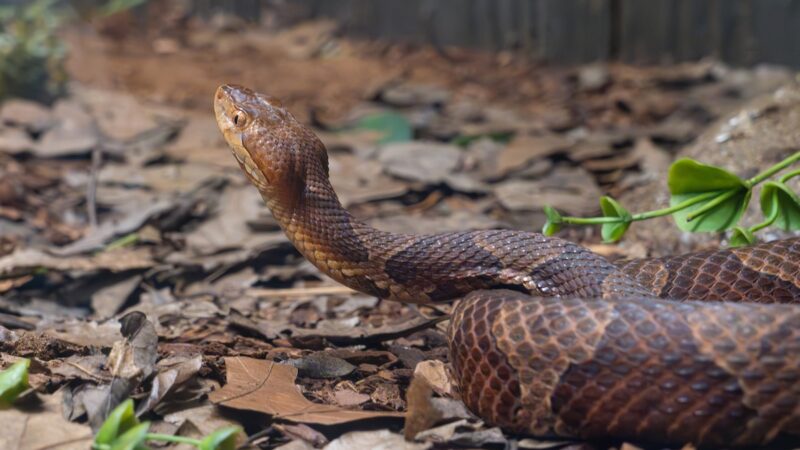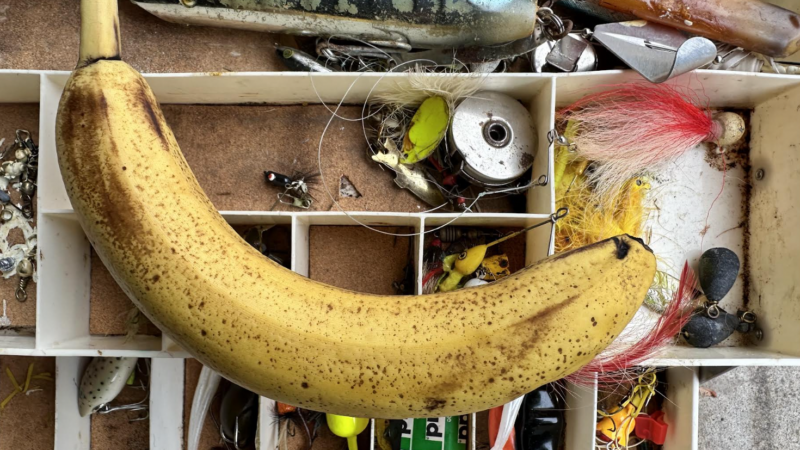Beginner’s Guide to Timber Stand Improvement: How to Improve Your Woods for Deer and Other Wildlife
Timber stand improvement (TSI) is an important practice in managing the woods for wildlife. Often referred to as forest stand improvement (FSI), this land management method is used to accomplish short-, mid-, and long-term habitat goals.
Proper implementation of TSI can accomplish much for deer and other wildlife. It can help create bedding cover. It can also increase browse-based food sources, open spaces for food plots, and more.
While there are some basic principles in timber stand improvement, it also comes with challenges and a learning curve.
“TSI is an intimidating thing,” says Matt Ross, National Deer Association senior director of conservation. “You’re walking into a stand of trees, deciding to kill it, after it’s been there for a long time. Many people are intimidated by that, which is understandable, because you’re changing the landscape.”
Timber Stand Improvement Defined
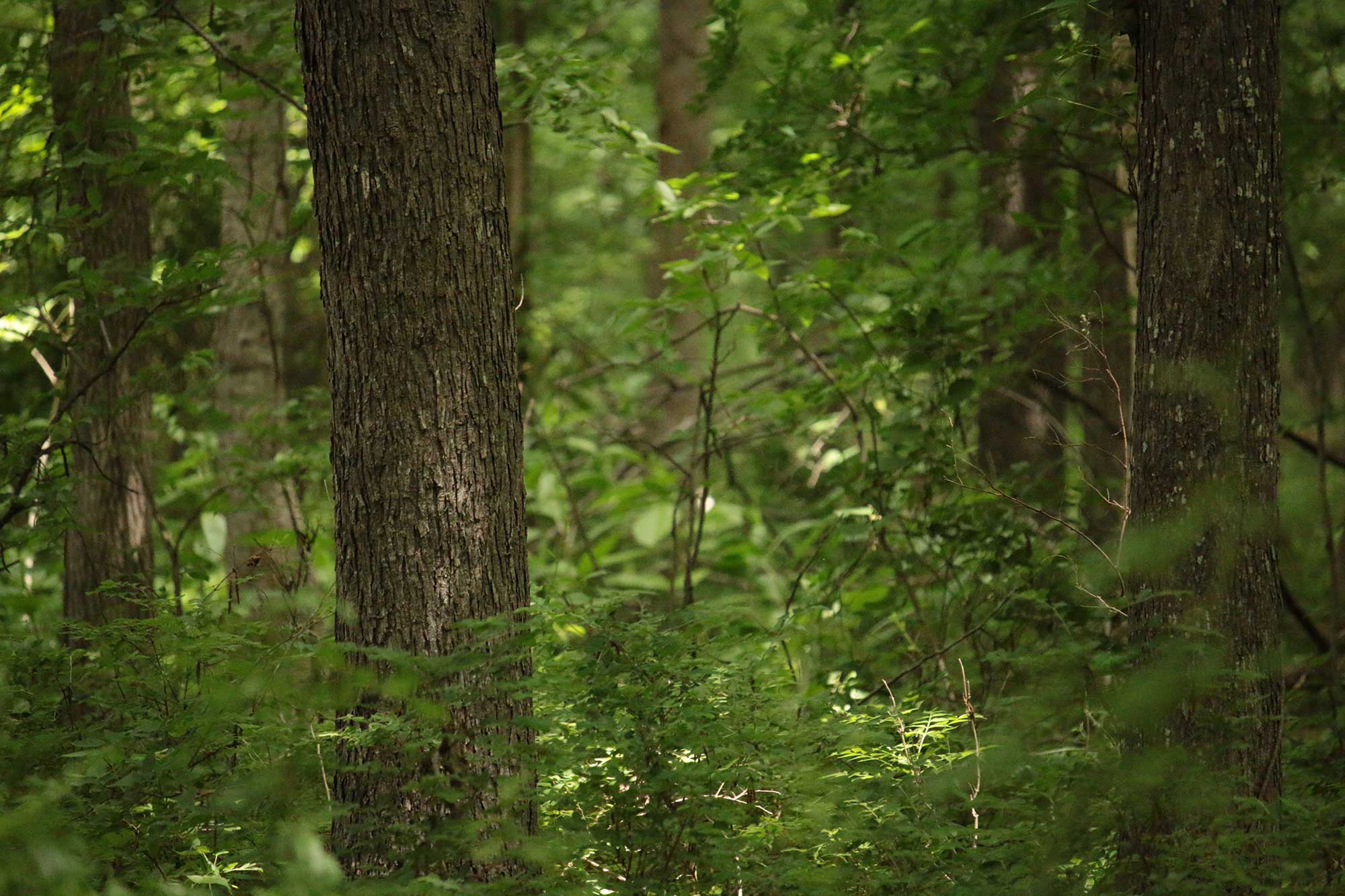
The definition of TSI is the removal of invasive and undesirable tree, shrub, and plant species. It aims to improve the composition and health of the forest. Timber stand improvement is about removing trees that shouldn’t remain on the landscape in order to benefit wildlife. As a result, remaining desirable trees are primed for success. Think of it as “weeding” the woods.
TSI is a broad term, though. For our purposes, we’ll focus on improving the woods for wildlife (which can sometimes also increase timber value, sometimes not so much).
For example, cutting oaks and other food-production trees usually isn’t compatible with TSI for wildlife. These trees feed deer and other wildlife. While it’s necessary to manage oaks, and these are hot-ticket trees for timber harvest income, folks who are managing land for deer often exclude prime oaks from timber harvest efforts.
From a logging standpoint, timber harvests are better when aimed at non-oak tree species, such as cherry, hickory, maple, walnut, and others. Regardless, it’s best to conduct timber harvests before starting TSI and FSI work.
Remember that the right stand to cut will come down to the individual situation. But in general, we’re trying to open the forest canopy.
“At the highest level, TSI and FSI are good for deer because you are opening up the canopy, which increases sunlight to the ground,” Ross says. “By default, this improves cover at the ground level. Deer gravitate to these areas because they need these.”
With certain trees removed, and the canopy opened, sunlight can hit the forest floor. This results in plant regeneration, which includes forbs and other broad-leaf plants.
Learn to Identify Tree Species on the Property
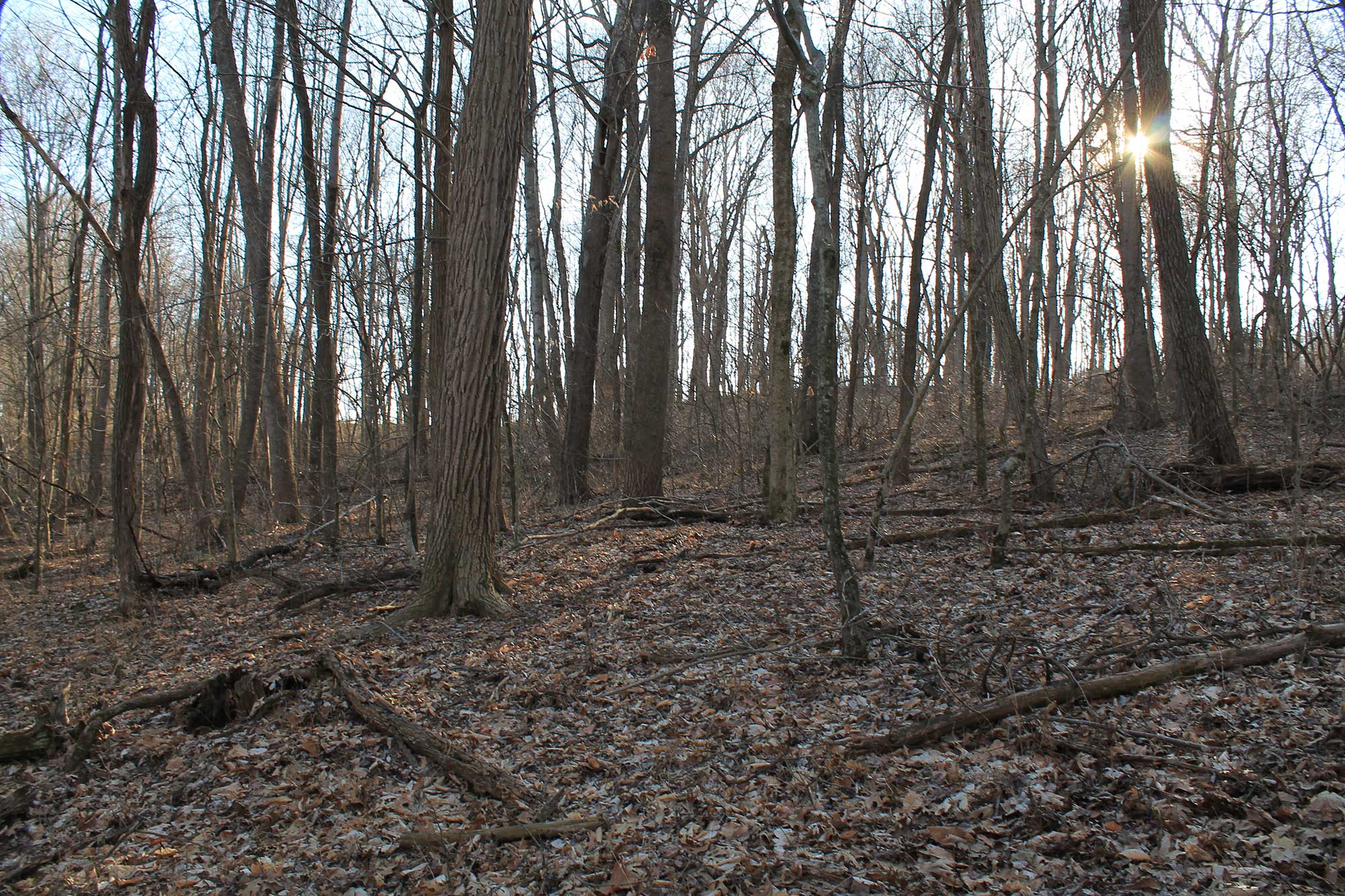
Before you fire up the chainsaw, you’ve first got to learn about the tree species that are present on your property and the value they bring to wildlife. If you don’t know what you’re cutting and why, you can’t expect to have positive results.
“It can be overwhelming thinking about the many different things that are out there,” Ross says. “But in most cases, there probably aren’t more than a half dozen to a dozen common trees. Most stand types are not so mixed that you’ll have dozens of trees to identify.”
There are some good resources out there for learning how to identify trees. Most state wildlife agencies have tree identification guides. So do university extensions. There are a bunch of great tree identification field guide books that are specific to states. There’s also a handful of apps that can help you identify trees in the field, like Flora Incognita, Picture This, and Leafsnap. Keep in mind that these apps are not 100 percent accurate, so check them based on your own knowledge and outside resources.
The initial phase of TSI is removing problematic trees and plants, such as invasive species. Failing to do this before cutting trees and opening the canopy can lead to a rapid expansion of unwanted plants and trees. So make sure to know about the invasive plants in your area.
Then it’s about learning how the local wildlife uses your woods.
“Learn which plants deer like to eat, and don’t kill those trees,” Adams says. “Leave mast-crop trees standing and untouched. In contrast, consider hinge-cutting (and don’t spray) trees deer like to browse on. For trees deer don’t browse on, girdle and spray or completely fell the tree and spray the stump.”
Timber Stand Improvement Methods to Consider
There are several tactics involved with TSI. That includes optional methods of deployment. “The most popular methods include a chainsaw, or hatchet and axe with herbicide,” Ross says. “You’re either manually removing the trees or killing them and allowing them to stand.”
Complete Felling
Completely cutting down the tree is one option for opening the canopy. However, trees routinely re-sprout from the stump. So, spray the cut stump to prevent this from occurring if you don’t want that type of tree to grow back.
“Some herbicides labeled for cut stump application are formulated to be mixed with oil,” the Ohio State University Extension notes. “These materials do not move readily within the plant, but they do penetrate the bark. To be effective in suppressing stump sprouting, the entire stump, particularly the bark and exposed roots, must be thoroughly sprayed. Timing is less critical with these materials because they are not as dependent on movement downward from the cut surface to distribute the herbicide.”
Girdle and Squirt
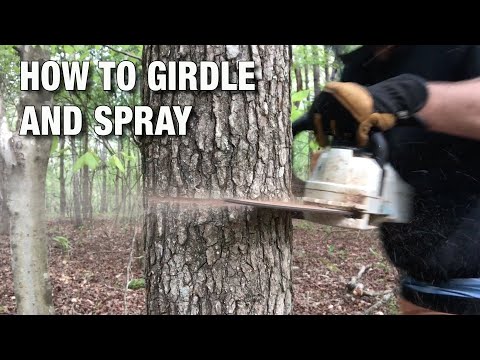
The girdling method involves sawing through the outermost layers of the tree trunk, which prevents future growth. It kills the tree, but it remains standing, maybe for a few more years.
Eventually, it falls. This process is safer in the short term, because you aren’t cutting it down. However, it can be dangerous in the long term, especially if you or others spend a lot of time around the girdled trees. According to the OSU Extension, girdling cuts might be 1-2 inches deep for smaller trees, up to 6-8 inches for larger trunks. Then, you can choose to spray, or not spray.
“Two horizontal cuts between 2–4 inches apart are made completely around the tree when no herbicide is used and one horizontal cut is made completely around the tree when herbicide is used,” OSU Extension states.
“If a tree is so big that you can’t influence the direction of the tree falling, with either your arm and hand, or with a push-pull tool, it’s probably better to girdle, spray, and let it stand,” Ross says. “Killing the tree standing will also increase sunlight.”
The other benefit to girdling is that you can impact a larger area faster. Completely felling a tree takes time. Girdling one is pretty quick.
You can create an effective herbicide by using 50 percent Garlon 3A, 40 percent water, 10 percent Arsenal AC). Watch this NDA video for a full tutorial on mixing herbicide.
Hack-and-Squirt
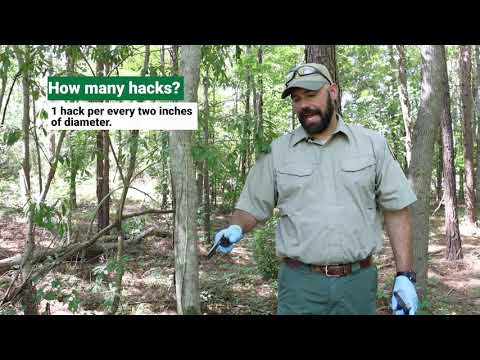
The hack-and-squirt method does not require cutting trees. Instead, it implements a chemical application that kills the tree. This process can be used when sap is not rapidly rising. This method prevents the species from sprouting back from the stump, which is important for especially invasive or undesirable trees.
You simply use a hatchet to slice into the tree and then squirt the cut. This method works best on smaller trees.
Hinge-Cutting
The hinge-cutting method is a popular option. This effort drops the tree but leaves some of the trunk intact. Therefore, the tree remains alive for a year or so (sometimes longer) and allows it to provide horizontal cover. Essentially, you cut through enough of the trunk to then be able to push the tree over or use a wedge to lean it over—while still leaving it attached to the trunk.
“You’re cutting a tree and tipping it while allowing it to stay connected and remain alive,” Ross says. “Since that’s the objective, you should pick a tree that is more likely to hinge well, allowing the tree to sprout. You immediately increase cover and visibility. The deer feel more comfortable.”
A hinge cut is made at waist height. Hinge cutting is best done with smaller and mid-sized trees and is popular for creating and improving bedding areas. But there are also good reasons to not hinge cut.

Understanding When to Use Each Method
You’ll likely want to use some of all these methods in your land management practice. So here is an oversimplificiation of when to use each method.
Complete felling is good for removing trees that you don’t want to eventually fall down. Like trees near access roads or food plots.
Girdling kills the tree, but it will likely re-sprout from the eventually stump. Therefore, do not use the girdling method for invasive or overly undesirable species. Instead, girdle and spray.
For invasive and highly undesirable native species, the hack-and-squirt or girdle-and-squirt methods are the best solutions. These kills the standing tree and minimizes likelihood of it returning at or near the future stump.
Hinge-cutting is good in moderation for creating low-level horizontal cover quickly. Use this for native tree species that offer no timber or wildlife value, but that aren’t overly undesirable. Select trees deer browse on.
Available Timber Stand Improvement Resources
Those new to TSI shouldn’t dive into it on their own. Generally, the best option is consulting with a district forester. Oftentimes, these foresters work through the state wildlife agency or department of natural resources.
“The state agencies, including wildlife and forestry departments, offer landowner workshops,” Ross says. “You might also look up the cooperative extension service. Oftentimes, they use that as an outlet for providing education for landowners.”
In some areas, another option is hiring a private forester. They’ll walk the property with you, study the landscape, and help prescribe a TSI plan. They’ll even assist with marking trees to cut, promote, etc.
Of course, clearly convey your goals for managing the timber and wildlife. Then, rely on the experts to help bring those dreams to fruition. During the property tour, tag along with the forester and ask them all the questions you’ve been wondering.
Additionally, look into cost-share programs for your area. Once again, check with your state wildlife agency or DNR. Likewise, contact your local Natural Resources Conservation Service office. These are the most likely routes for professional resources and cost-share programs. The Environmental Quality Incentives Program is but one good example of this.
The NDA offers in-person and virtual workshops, too.
“I’d be remiss without mentioning the NDA’s Deer Steward courses,” Ross says. “We have online and in-person options, plus habitat modules that are specific to deer. There are TSI and FSI components to these. People can complete these online or attend in person.”
For more information on timber stand improvement, check out these incredible guides from the following resources:
- Kentucky Department of Fish & Wildlife Resources
- Mississippi State University Extension
- Ohio State University Extension
- Texas A&M Forest Service
Important Timber Stand Improvement Gear
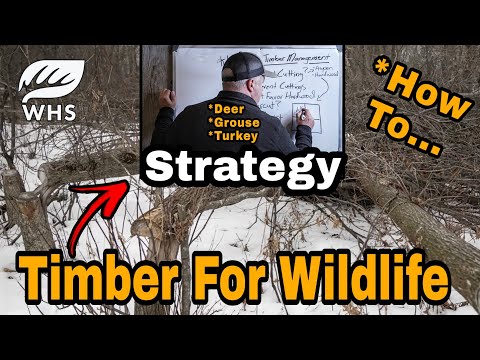
The good news is you don’t need to be a professional logger to practice timber stand improvement.
“With a small saw and 14-inch bar, you can immediately choose if you want to completely cut a tree,” Ross said. “I can then decide if I want to spray and kill the tree or not spray so it re-sprouts.”
But you will need some gear:
- Chainsaw and Sharpener
- Sledgehammer or Axe
- Wedge
- Push-pull tool
- Helmet (with shield)
- Earmuffs
- Long sleeves
- Gloves
- Chainsaw Chaps
- Herbicide spray
- ATV or UTV
Final Thoughts on Timber Stand Improvement: Plan to Do It The Right Way
When you begin the TSI effort, start slow. It’s easy to make irreversible mistakes, especially without fully understanding the TSI process. Educate yourself. Then begin.
Remember that timber stand improvement work can be dangerous, especially when handling chainsaws and felling large trees.
Consider taking a chainsaw training course and always wear your safety gear.
It’s always best to conduct TSI work in pairs. An extra set of eyes and ears helps reduce the odds of injury. Plus, in hill country, it’s much safer to start at lower elevations and work uphill.
All said, with a firm understanding of TSI, and a course completion on safety, it’s time to cut trees. Done correctly, the deer and other wildlife are sure to thank you for it and your hunting will only get better.
The post Beginner’s Guide to Timber Stand Improvement: How to Improve Your Woods for Deer and Other Wildlife appeared first on Outdoor Life.
Source: https://www.outdoorlife.com/hunting/timber-stand-improvement/

